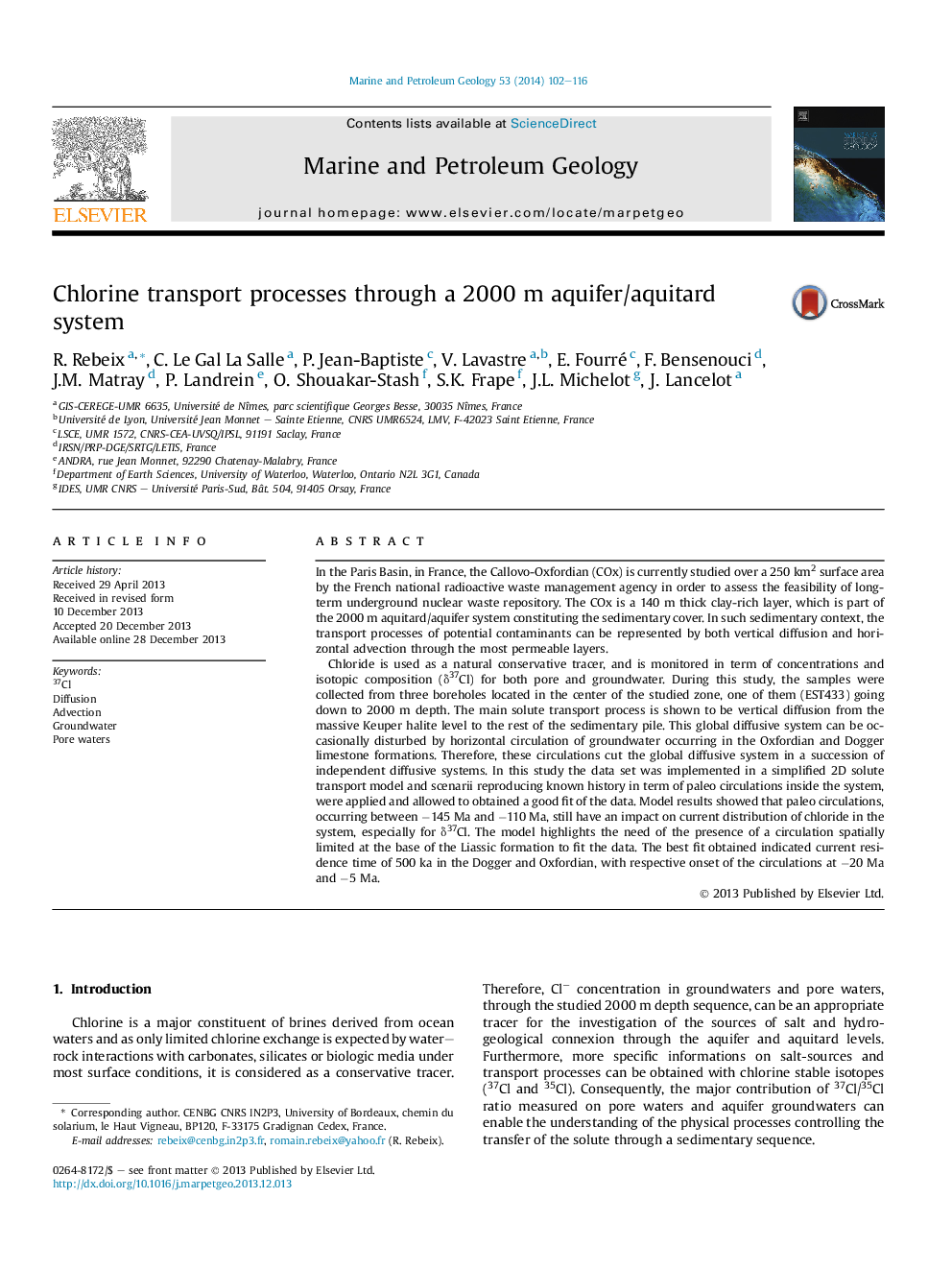| Article ID | Journal | Published Year | Pages | File Type |
|---|---|---|---|---|
| 4695659 | Marine and Petroleum Geology | 2014 | 15 Pages |
•δ37Cl and [Cl−] analysis of pore and groundwaters through a 2000 m sedimentary cover.•Vertical diffusion from the Keuper halite level is the major solute transport process.•Past and present advection represent a secondary solute transport process.•A simplified scenario of the last 200 Ma applied to a 2D model correctly fit the data.•Model clearly shows the impact of paleocirculations on the current Cl distribution.
In the Paris Basin, in France, the Callovo-Oxfordian (COx) is currently studied over a 250 km2 surface area by the French national radioactive waste management agency in order to assess the feasibility of long-term underground nuclear waste repository. The COx is a 140 m thick clay-rich layer, which is part of the 2000 m aquitard/aquifer system constituting the sedimentary cover. In such sedimentary context, the transport processes of potential contaminants can be represented by both vertical diffusion and horizontal advection through the most permeable layers.Chloride is used as a natural conservative tracer, and is monitored in term of concentrations and isotopic composition (δ37Cl) for both pore and groundwater. During this study, the samples were collected from three boreholes located in the center of the studied zone, one of them (EST433) going down to 2000 m depth. The main solute transport process is shown to be vertical diffusion from the massive Keuper halite level to the rest of the sedimentary pile. This global diffusive system can be occasionally disturbed by horizontal circulation of groundwater occurring in the Oxfordian and Dogger limestone formations. Therefore, these circulations cut the global diffusive system in a succession of independent diffusive systems. In this study the data set was implemented in a simplified 2D solute transport model and scenarii reproducing known history in term of paleo circulations inside the system, were applied and allowed to obtained a good fit of the data. Model results showed that paleo circulations, occurring between −145 Ma and −110 Ma, still have an impact on current distribution of chloride in the system, especially for δ37Cl. The model highlights the need of the presence of a circulation spatially limited at the base of the Liassic formation to fit the data. The best fit obtained indicated current residence time of 500 ka in the Dogger and Oxfordian, with respective onset of the circulations at −20 Ma and −5 Ma.
